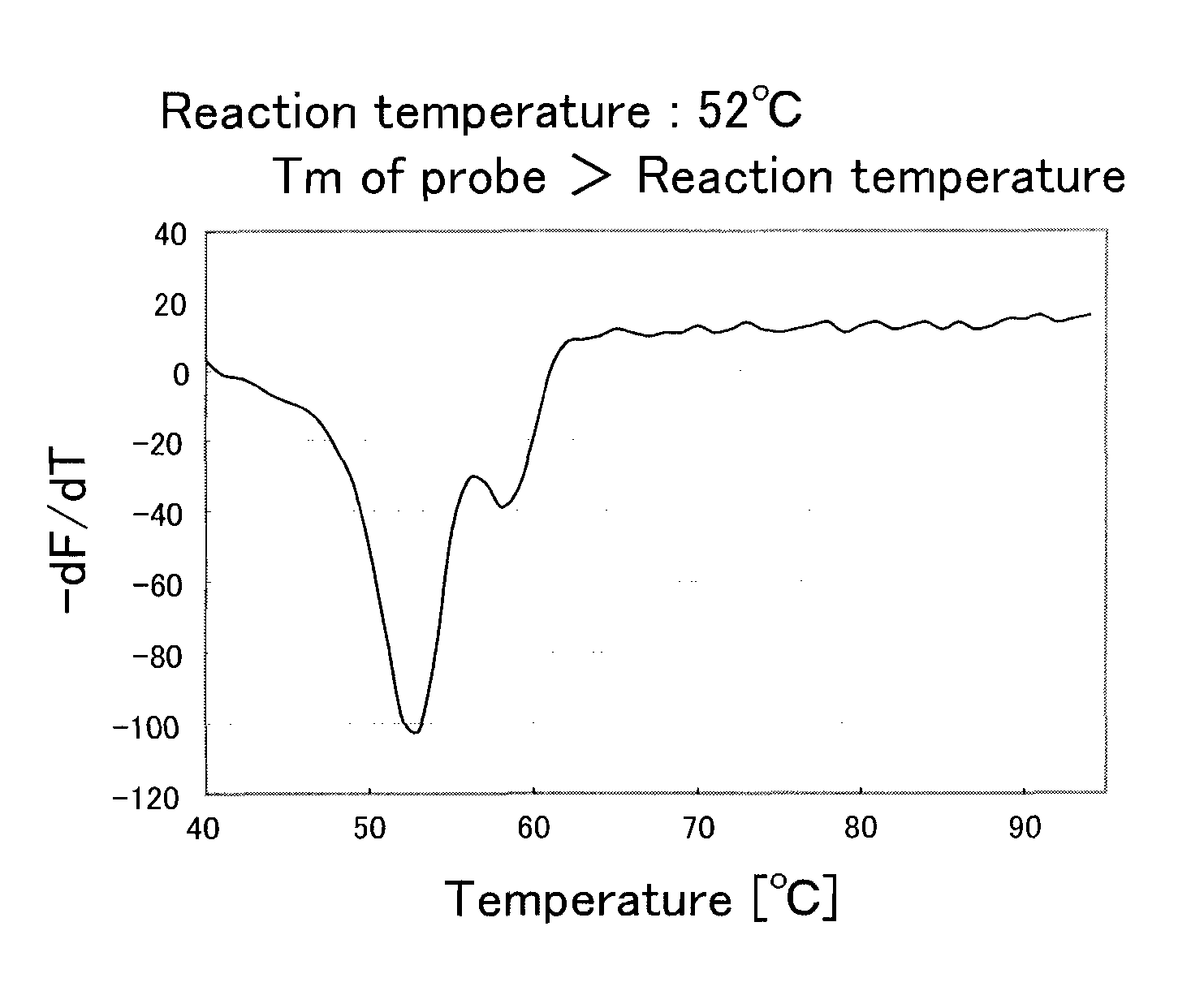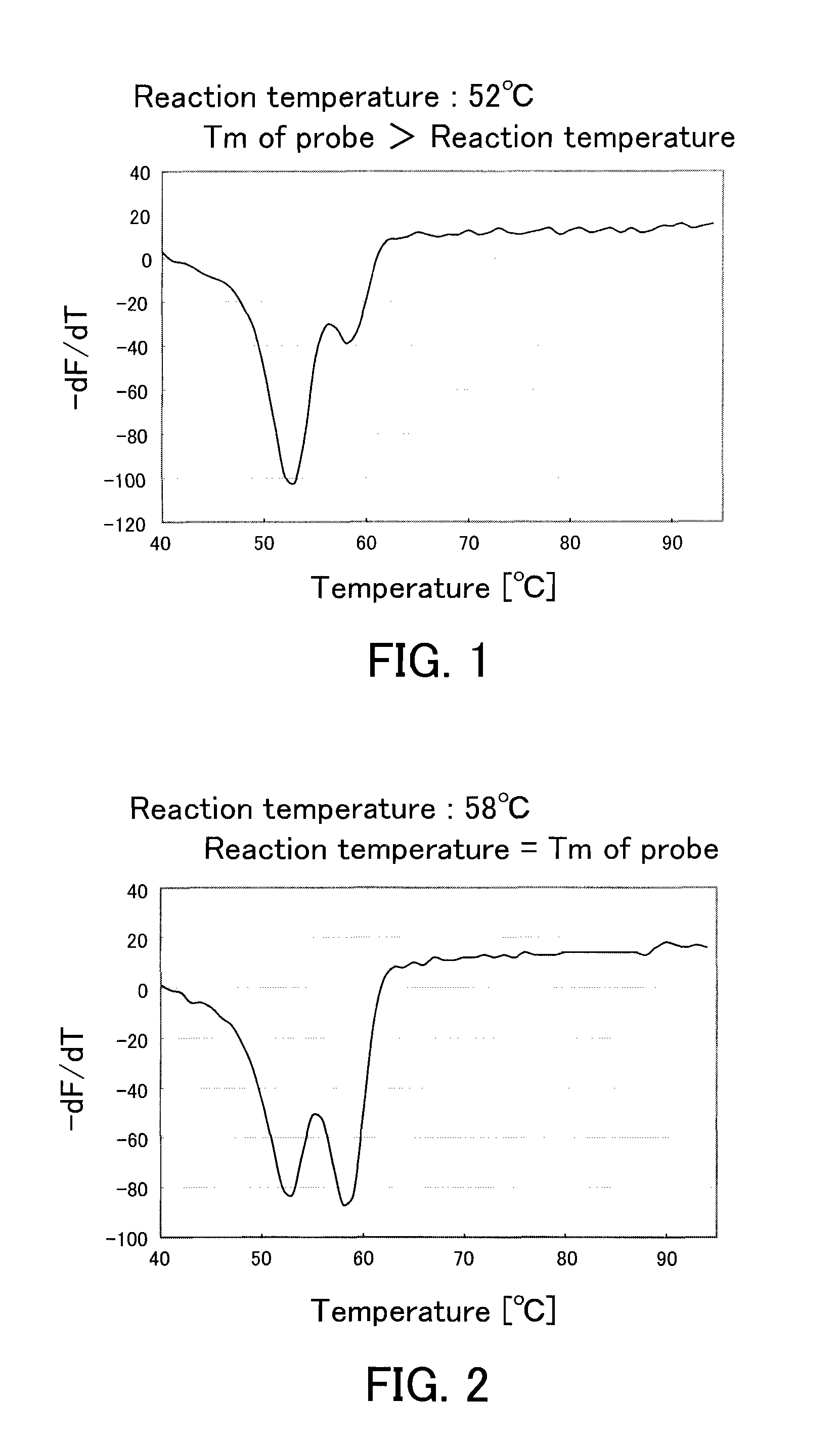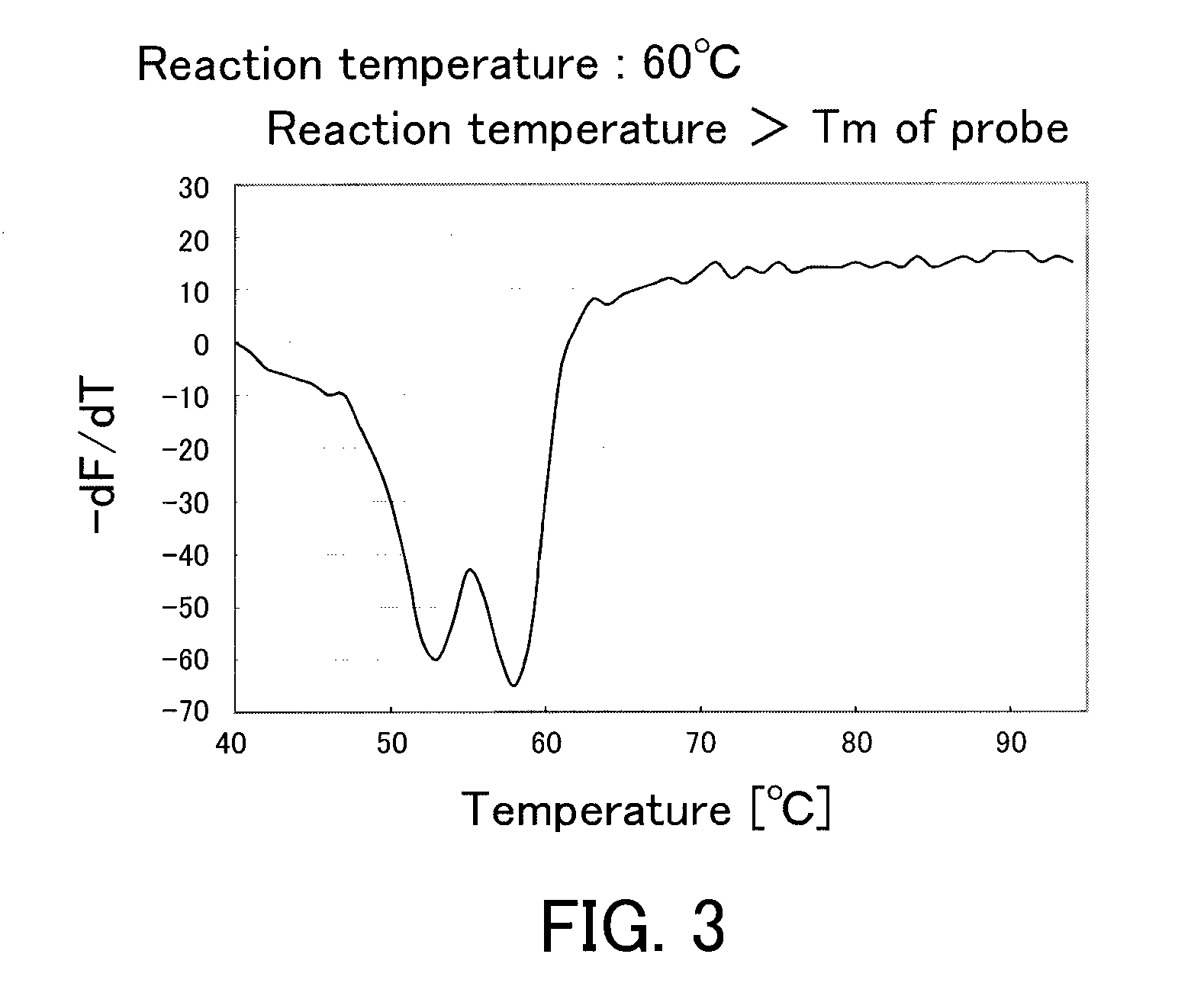Method for amplifying target nucleic acid sequence and probe used for the same
a nucleic acid sequence and target technology, applied in the field of amplifying target nucleic acid sequence and probe used for the same, can solve the problem of difficult peak detection, and achieve the effect of enhancing the accuracy of analysis, ensuring the same amplification efficiency, and sufficiently amplifying the target sequen
- Summary
- Abstract
- Description
- Claims
- Application Information
AI Technical Summary
Benefits of technology
Problems solved by technology
Method used
Image
Examples
example 1
[0088]From blood of a subject showing a heterozygous CYP2C9*3 polymorphism, a genome was purified using a kit (product name “QIAamp DNA Mini kit”, produced by QIAGEN Co., Ltd.). The purified genome was diluted to 1 / 10 (volume) with TE (10 mmol / L Tris-HCl and 1 mmol / L EDTA). 1 μL of this diluted purified genome was added to 49 μL of a PCR reagent of the following composition, and a PCR was conducted using a thermal cycler. The PCR condition was as follows: a treatment at 95° C. for 60 seconds, followed by 50 cycles, with a dissociation treatment of a double strand for 1 second and an elongation reaction treatment for 15 seconds as 1 cycle. The temperature of the dissociation treatment was set at 95° C., and the temperature of the elongation reaction treatment (including an annealing treatment) was set at the predetermined temperature (52° C., 58° C., or 60° C.). After the PCR, the resultant reaction solution further was treated at 95° C. for 1 second and at 40° C. for 60 seconds, fol...
PUM
| Property | Measurement | Unit |
|---|---|---|
| temperature | aaaaa | aaaaa |
| melting temperature | aaaaa | aaaaa |
| reaction temperature | aaaaa | aaaaa |
Abstract
Description
Claims
Application Information
 Login to View More
Login to View More - R&D
- Intellectual Property
- Life Sciences
- Materials
- Tech Scout
- Unparalleled Data Quality
- Higher Quality Content
- 60% Fewer Hallucinations
Browse by: Latest US Patents, China's latest patents, Technical Efficacy Thesaurus, Application Domain, Technology Topic, Popular Technical Reports.
© 2025 PatSnap. All rights reserved.Legal|Privacy policy|Modern Slavery Act Transparency Statement|Sitemap|About US| Contact US: help@patsnap.com



